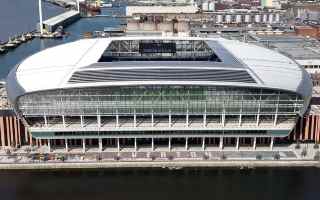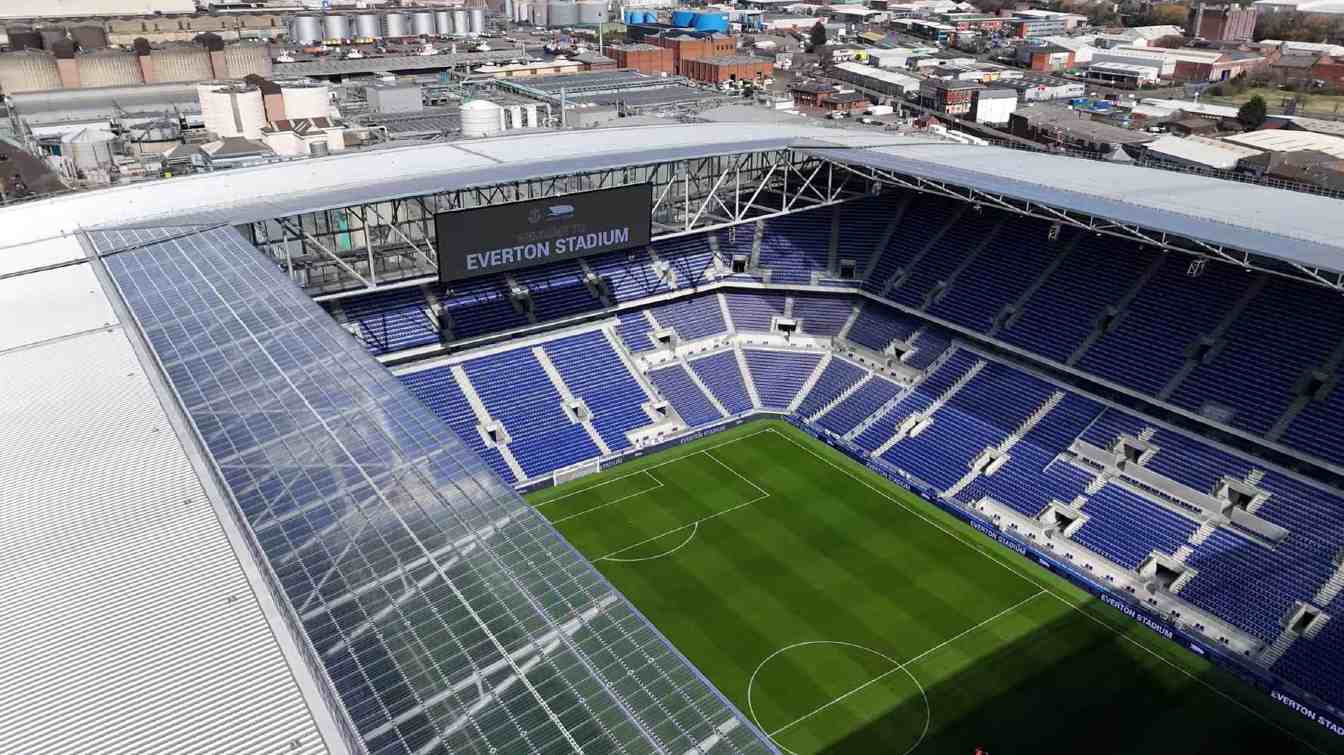England: Will Everton’s new stadium spark revival of north Liverpool?
source: Financial Times; author: Jakub Ducki
 Everton’s upcoming move to a new stadium on the banks of the River Mersey brings with it a renewed hope for the regeneration of a long-neglected part of Liverpool. The club’s new owners believe the Bramley-Moore Dock development could become a turning point for the entire region.
Everton’s upcoming move to a new stadium on the banks of the River Mersey brings with it a renewed hope for the regeneration of a long-neglected part of Liverpool. The club’s new owners believe the Bramley-Moore Dock development could become a turning point for the entire region.
Advertisement
Bramley-Moore Dock – from docklands to modern hub
After more than 130 years at Goodison Park, Everton is preparing for a major transition. The new Everton Stadium, with a capacity of 52,888, is emerging not only as a symbol of the club’s future but also as a promise to transform Liverpool’s northern waterfront. Topped with a distinctive barrel-shaped roof and framed by classic brick columns, the stadium is expected to serve as a major engine of regional growth.
The Bramley-Moore Dock area had long been overlooked in terms of urban investment. Despite its prime riverside location, it lacked modern infrastructure, dining options, and entertainment venues. One of the few examples of successful redevelopment is the Titanic Hotel, converted from historic port warehouses. The new stadium could change the landscape – the square outside will accommodate up to 17,000 fans, and the first market stalls and service points have already started to appear.
For Marc Watts – Everton’s CEO and head of the Friedkin Group – the stadium is a key component of a broader urban development strategy. In an interview with the Financial Times, he stated that failing to use the stadium project as a springboard for wider regeneration would be a missed opportunity.
He is calling on the private sector as well as local and central government for collaborative efforts – not necessarily financial, but through partnerships with people who want to be part of the business plan’s realization.
Transport, infrastructure, and future of district
As Prime Minister Keir Starmer pushes for economic growth, Everton’s stadium project could become a test case for the UK’s ability to convert football’s global appeal into tangible economic benefits. Steve Rotheram, Mayor of the Liverpool City Region, is confident in the project’s importance – calling the stadium hugely important landmark
for regeneration. Government agency Homes England has already allocated £56 million for residential development in the area, which could encourage further investment.
The planned expansion around the stadium also requires improved transport connections. Currently, the only nearby station is Sandhills. Liverpool City Council leader Liam Robinson mentioned the idea of establishing an urban development corporation – an entity designed to promote regeneration of post-industrial areas. Everton is not looking to remain a passive bystander – the club is considering acquiring the adjacent Nelson Dock to build additional sports facilities, which could be co-financed through public or private funds.
Boosting revenue and stadium’s commercial potential
Everton has endured tough financial years – the club hasn’t turned a profit since 2016, with total losses reaching £566 million. Spending on players, infrastructure, and growing debt created mounting pressure. A takeover attempt by Miami-based 777 Partners collapsed after failing to receive Premier League approval. Stability only returned with the arrival of the Friedkin Group and financial support from JPMorgan, which helped refinance £350 million in debt.
The modern stadium also opens up new revenue streams – it’s estimated to generate an additional £60 million annually. Beyond football matches, the venue will host Euro 2028 fixtures, the Ashes rugby series, and major music concerts. The club also plans to sell naming rights to the stadium, hoping for interest from American partners.
Advertisement

 StadiumDB
StadiumDB
